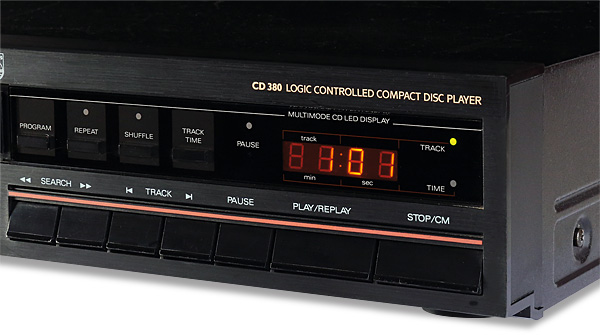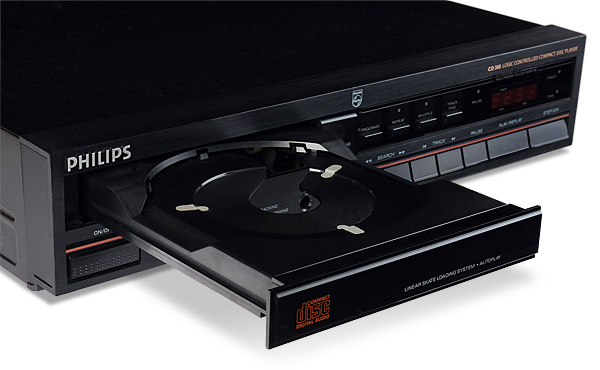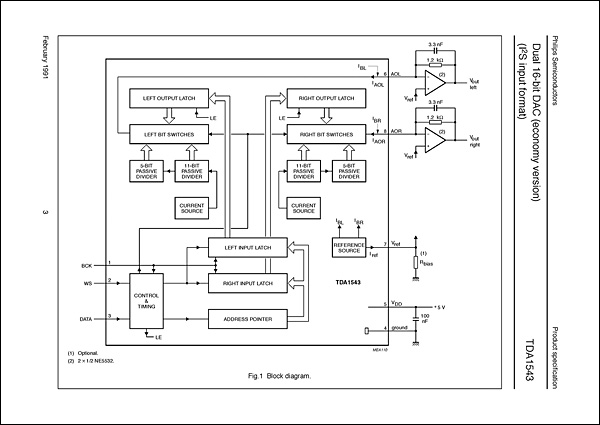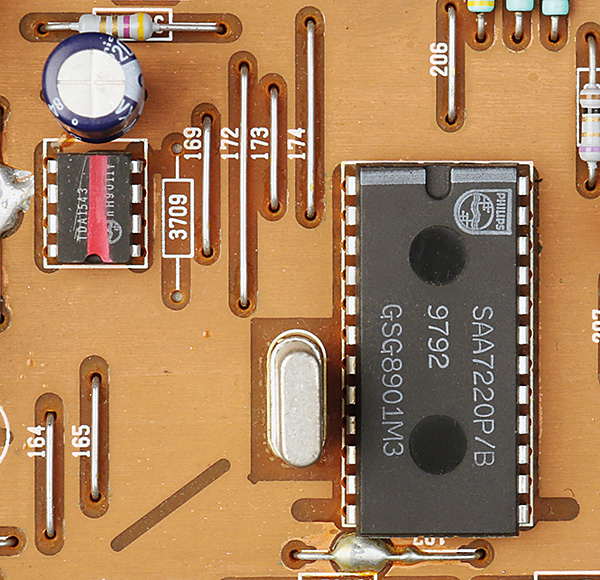Philips CD380 CD player

 This late '80s player may have been built to a price using a DAC suited to portables, but it promised few compromises when it came to sheer sound. How will it shape-up today?
This late '80s player may have been built to a price using a DAC suited to portables, but it promised few compromises when it came to sheer sound. How will it shape-up today?
One of the many impressive achievements of the early CD era was the way in which the price of players remained constant, or even fell, as the technology used inside them improved. The first machines were masterpieces, beautifully constructed utilising the best materials and processes. However, it was soon realised that when it came to the basic task of playing a disc, much could be stripped away, and in the years that followed the format's release this was exactly what began to happen.
As the market approached saturation at the end of the 1980s the cost-cutting schemes had become ever more ingenious. The Philips CD380 seen here is a good example of such a player. To quote an early critic of the Citroen 2CV, its designers seemed to have 'kissed the lash of austerity with an almost masochistic fervour'.
Sultan Of Swing
Many of Philips' rivals had kept the prices of their machines low by outsourcing production and assembly to lower-cost economies such as Taiwan and Korea. They also used generic parts rather than their own specialised components, reserving these for their own top models. With the CD380 Philips did neither of these things, keeping production in Belgium with most of the parts coming from inside the organisation. This included the famous swing-arm mechanism, by this stage in CDM4 form. The CDM4-19 deck fitted to the CD380 could also be found in some of the best and most expensive machines on the market, so no economies had been made there. Instead, the manufacturing process was ruthlessly rationalised, with the number of parts and the number of assembly operations reduced to the absolute minimum. In line with an idea introduced in a previous range of Philips machines (the CD471, etc) the separate PCB under the CD transport was eliminated and made part of the main board.

The same was true of the sensors for the tray mechanism and the mains transformer, all of which were now assembled in a single operation. Even the number of screws holding the player together were scrutinised, with mechanical clips and catches employed wherever possible.
Art Of Noise
Another key area in which savings were made was when it came to the choice of the DAC. The first CD380s produced used a variant of the well-known TDA1541 with an 'R' suffix. Unkindly referred to as 'reject' grade in some quarters, this was the lowest selection grade available for this key part. The differences were minuscule in practice though, amounting to around 2dB of extra noise and distortion at –60dB. All other parameters were identical to the standard TDA1541A. Later CD380s, such as the sample featured here, arrived with a new 'economy' DAC from Philips, the TDA1543.

Chip 'N' Pins
This particular chip had been carefully designed for low-cost machines and was especially suitable for portables and car players. It used a third of the power of its predecessor and only required a single supply of +5V (unlike the TDA1541, which needed three different voltages, two of them negative, to work) and minimal external components. Such was the degree of simplification that the DAC's IC package had just eight pins rather than 28.
Despite this, the idea of having a dedicated DAC circuit for the left and right audio channels had been retained, so time sharing (then the common Japanese practice) was not necessary. Something had to give, of course, and this was the loss of a unique function of the TDA1541 called 'Dynamic Element Matching' (DEM).

DEM worked by rapidly swapping around the circuit elements inside the DAC that determined the values of the six highest value bits, which after averaging ensured that they were very accurately scaled. This was one of the factors that gave the TDA1541 its excellent performance and its absence from the TDA1543 was one of the reasons its noise and distortion performance were up to 20dB worse. While this sounds highly detrimental, the figures obtained were still greatly better than those most domestic audio applications required, and were still a substantial improvement over those of records and tapes.
Of course, sound quality was a key selling factor for Compact Disc, and to this end the CD380's analogue filters were still constructed with high-spec components. For example, film capacitors in leaded packages were employed in the key parts of the filters, even though surface-mounted ceramics would have been cheaper.

Meanwhile, the 4x oversampling filter that had been a feature of all Philips full-size players since their introduction was also retained. This was less of a unique technology than it once was as the bulk of players intended for hi-fi applications now included one. But there were still a few on the market that retained older 2x oversampling/single time-shared DACs.
The player wasn't sparse on features, either, with programmable and shuffle play options, a multi-function digital display, separate search and skip keys and a headphone socket (albeit at a fixed level) mounted on the front panel.
Seeing Red
Philips would eventually produce a whole range of TDA1543-based players, from basic models such as the Austrian-built AK 601 to the quite elaborate CD620. Their time in the sun would be limited though, as Bitstream technology offered even greater possibilities for companies to save costs.























































